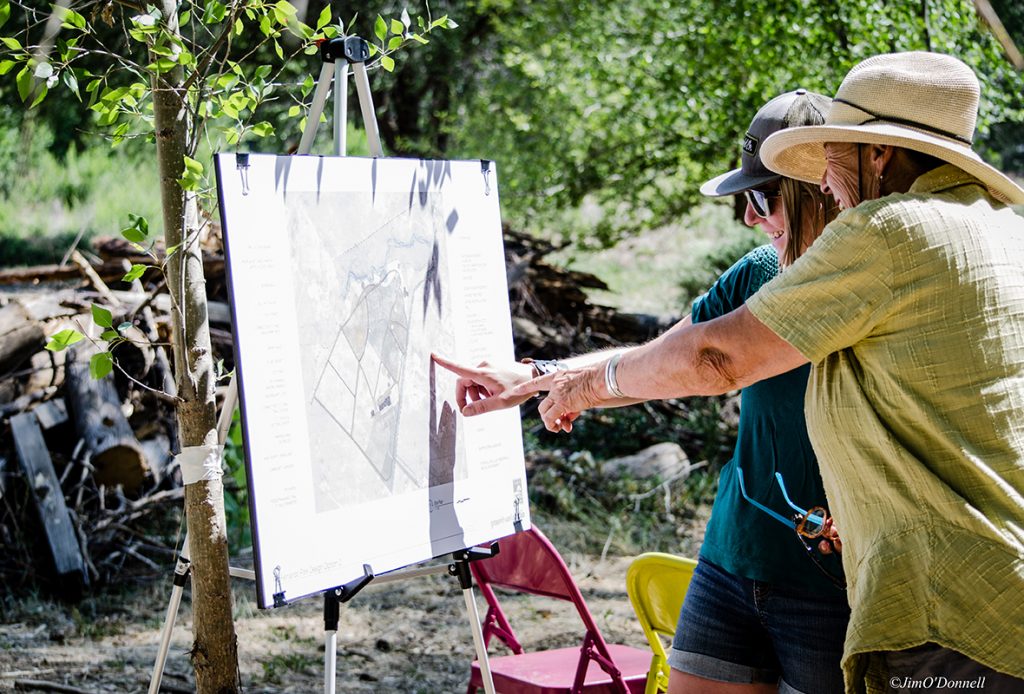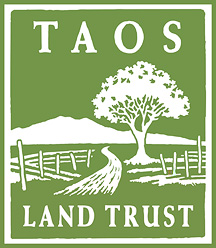
Photo: Jim O’Donnell
To help you negotiate the terms of a conservation easement, we have compiled this glossary of land conservation terminology to provide you with a better understanding of the basic components and processes involved in putting a property under a conservation easement.
- Affirmative Rights and/or Obligations: Uses and rights granted to the easement holder to be conducted on a protected property, such as the right of physical access for annual monitoring. Also refers to provisions that require the landowner to maintain resources protected by the easement (i.e., wetlands, water rights), or if owner fails to maintain, requires easement holder to maintain.
- Annual Site Visit (a.k.a.Monitoring): One of the terms of any conservation easement is that the land trust visits the site of an easement each year to be sure the terms of the agreement are being upheld.
- Appraisal: An appraisal is a report provided by an independent professional who supplies a landowner or a land trust with information about the “fair market value” of property.
- Bargain Sale: A sale of property or development rights to a charitable conservation organization or municipality at less than fair market value. The difference between the fair market value and the bargain sale price is a charitable donation that may reduce the donor’s income or capital gains taxes.
- Baseline Documentation Report (BDR): A compilation of information that documents the current condition and conservation values of the property at the time a conservation easement is granted, generally including maps, photographs and a description of significant features. The report is used to monitor and enforce the easement and is signed by the landowner(s)and holder at time of donation.
- Basis: The original cost of the property.
- Bequest: A gift of money, real property, or conservation easement in a person’s will which can secure conservation of property and take property value out of calculation for estate tax.
- Biodiversity: The variety of ecosystems and species of plants and animals that can be found in the environment.
- Buffer: A strip of land between two other pieces of land in different use. Usually the buffered land is located between a developed piece of land a protected area of open space.
- Capital Gains: Profit from the sale of land or other capital asset in excess of cost, or other basis.
- Charitable Remainder Trust (CRT): When a donor makes a gift to a charitable organization through a CRT, the donor receives a charitable gift tax deduction and does not have to pay capital gains tax on the asset. The CRT manages the investment of the asset and distributes a stream of income to the donor over a specified time period.
- Charitable Contribution: The tax deductible transfer of money or property to a qualified charitable organization.
- Conservation: Careful preservation and protection of resources, usually referring to land and related natural resources, includes planned management of resources to protect their future integrity and value.
- Conservation Easement: A voluntary agreement between a landowner and a qualified conservation organization or municipality that protects the land for development. The landowner retains ownership and the rights to sell it or pass it to heirs. If donated for conservation purposes, an easement is a tax‐deductible charitable gift and may substantially reduce estate taxes.
- Conservation Based Development: A development plan for a property that frequently incorporates the use of conservation easements and permits landowners to undertake a specified and limited amount of future building or development that does not interfere with the land’s conservation value.
- Conservation Purposes: The specific purposes a conservation easement must meet in order to be a tax-deductible donation under Sect. 170(h) of the IRS Code and related Treasury Regulations.
- Conservation Values: Wildlife habitat, open space, historic, or recreational resources. For example, land may have a high conservation value if it contains habitat for endangered species or if it has open space in a highly developed area.
- Deed Restriction: A written stipulation contained within a deed that restricts certain future uses of the property generally inserted at the time of transfer. A deed restriction may include restrictions similar to those contained within a conservation easement. However, enforcement may only be carried out by the prior owner or other parties to the transaction and the restrictions may be cancelled at any time by mutual written agreement.
- Ecosystem: All of the factors that allow a healthy environment to function; the complex relationships among an area’s resources, habitats and residents. An ecosystem may include people, wildlife, fish, trees, water and several other living and non-living elements.
- Ecotourism: Nature-based tourism that involves education and interpretation of the natural environment and is managed to be ecologically sustainable. Ecotourism often involves hiking, kayaking, and bird watching among others.
- Endowment: A permanent stewardship fund established to support costs of maintaining a property or defending and monitoring a conservation easement. Permanence is assured by restricting withdrawals from the principal and relying on investment income for annual cost.
- Environmental Impact: A change in the environment that could have a negative effect on the ecosystem. Land trusts try to prevent environmental impacts by conserving sensitive lands.
- Estate Taxes: The combined state and federal taxes levied against one’s total estate including real property at death, payable within nine months and before distribution to the heirs.
- Family Limited Partnership: A form of ownership that can be used to transfer land and other assets from one generation to another. It reduces the total value of the asset, thereby reducing estate taxes.
- Fee Simple Donation: Transfer of a property by deeding it directly to a charitable organization for conservation or other purposes. Tax benefits may apply to the donor.
- Gift by Devise: A gift of land through a person’s will.
- Highest and Best Use: The most profitable likely and legal use to which a parcel of land is likely to be put (a determination made in calculating value).
- IRS Form 8283: The form filed with the Internal Revenue Service by a donor to report information about non-cash contributions (e.g., land and conservation easements) in excess of $5,000 for which the donor claims a charitable deduction. The donee organization completes a portion of this Form acknowledging receipt of the contribution.
- Land Donation: An outright donation of land to a municipality or a qualified conservation organization permanently protects land from development, provides the donor with a charitable gift income tax deduction and a reduction in estate taxes.
- Land Trust: A nonprofit organization that works to conserve land and historic resources through the acquisition and protection of land and conservation easement and through its land stewardship programs.
- Monitoring: The conservation organization visits the site of an easement each year to be sure the terms of the agreement are being upheld. (See Annual Site Visits).
- Monitoring Report: Documentation of the results from an Annual Site Visit on a Conservation easement.
- Mutual Covenants: Written commitments regarding land use contained in a deed or other form of agreement and exchanged among neighboring landowners.
- Open space: Undeveloped land or common areas that are reserved for parks, walking paths, or other natural uses.
- Public Benefit(s): The values (scenic, recreational, ecological, cultural, historic or spiritual) that people derive from a protected property.
- Purchase of Development Rights (PDR): A landowner voluntarily agrees to sell all, or a portion of, the development rights on farmland to a municipality. The landowner retains the right to farm, sell, and pass the land to heirs. The sale provides cash to the landowner, reduces estate taxes, but may be subject to capital gains tax.
- Right-of-First-Refusal: A recorded agreement that requires landowners, if they receive an offer to buy their land, to allow the land trust to match the offered price.
- Riparian Habitat: The transition zone between aquatic and upland habitat. Riparian habitat lies adjacent to rivers and streams with a differing density, diversity, and productivity of plant and animal species relative to nearby uplands.
- Smart Growth: A planning concept that strives to create communities with walkable neighborhoods, mixed land use – including open space, a central business district, and an adequate public transportation system. Through better planning, smart growth allows for the needs of all community members to be met, while protecting the necessary natural areas for a healthy lifestyle.
- Stewardship: Caring for and managing resources with good conservation practices to ensure their protection; a philosophy of land management which focuses on caring and preservation.
- Title Report: A report prepared by a title company or attorney that documents the quality of ownership held by a specific person or entity. The report documents encumbrances, easements and third party ownership rights in the property.
- Transfer of Development Rights (TDR): Development rights are transferred from one property in a sending district to another property(ies) in a receiving district(s).
- Treasury Regulations: The regulations issued by the IRS that implement the IRS Code, pursuant to laws passed by Congress. With regard to conservation easements, these refer to regulations contained in Sect. 170(h) that explain the requirements of deductible conservation easement gifts.
- Watershed: The entire area of land that collects and drains water (from snow and rain) into a single river or similar body of water.
- Wetlands: Lands that are normally saturated with water, such as swamps, marshes, and bogs. These areas often host plants and animals adapted to life in very wet conditions.
